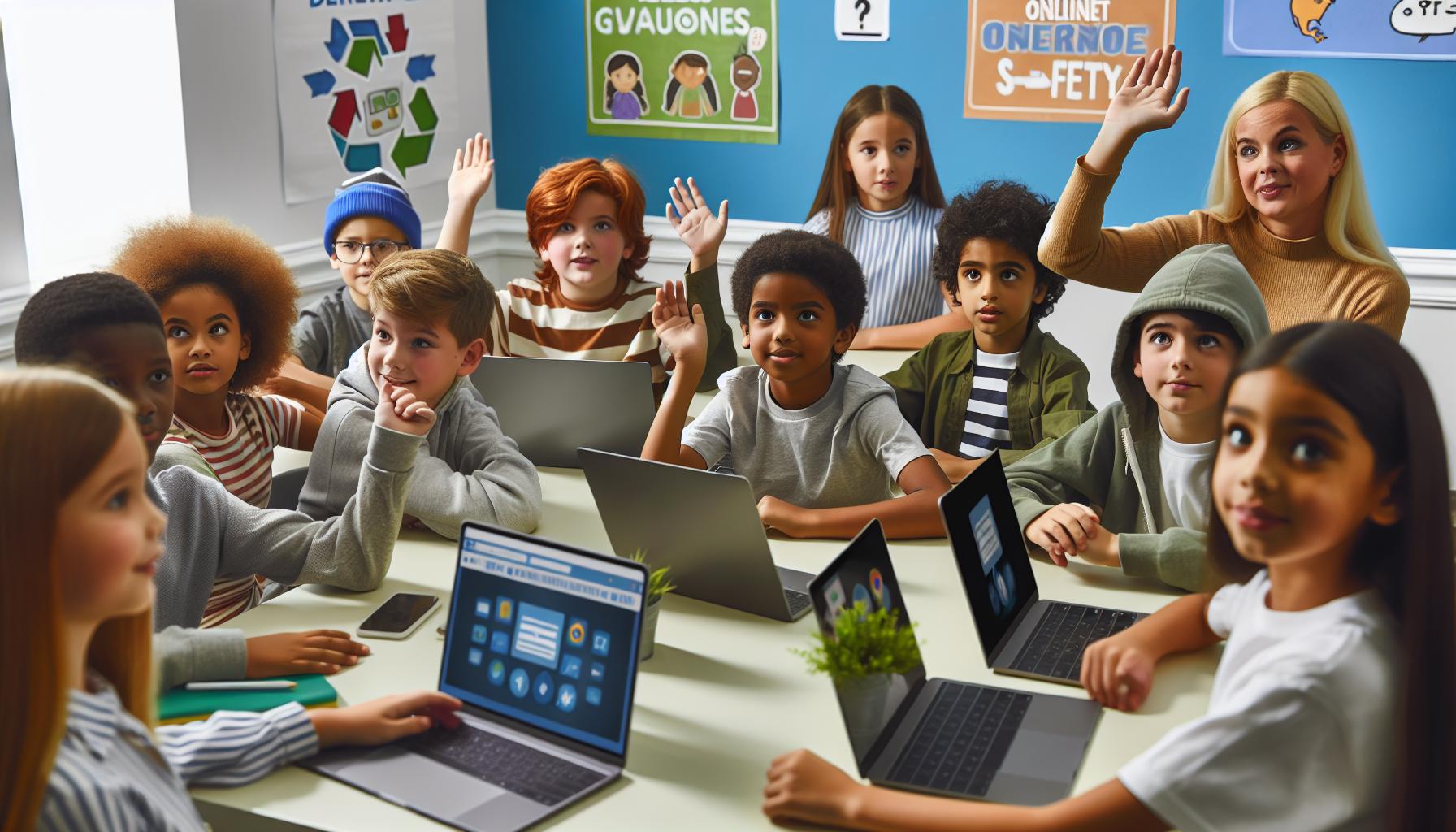Key Takeaways
- Understand the Risks: Familiarize yourself with common social media dangers like cyberbullying, privacy issues, and exposure to inappropriate content to better protect your children.
- Establish Open Communication: Maintain regular discussions about online experiences, encouraging children to express concerns and recognize suspicious activities.
- Set Up Privacy Settings: Help children adjust privacy settings on their profiles to limit visibility and regularly review these settings to keep their options secure.
- Monitor Online Activity: Keep an eye on the social media platforms your kids use, understanding their features and implementing parental controls where necessary.
- Educate on Safe Behavior: Teach children to identify inappropriate content, handle online bullying, and report any unsettling interactions to trusted adults.
- Utilize Recommended Resources: Leverage parental control software, social media monitoring apps, and educational platforms to enhance your child’s online safety.
In today’s digital age, social media is an integral part of childhood. Kids connect with friends, share experiences, and express themselves online. However, with these opportunities come significant risks that parents must navigate. Understanding these dangers is crucial for ensuring a safe online environment for children.
Social media safety for kids isn’t just about monitoring their activity; it involves educating them on the potential threats they may encounter. From cyberbullying to privacy concerns, the challenges are real and can have lasting effects. By fostering open communication and setting clear guidelines, parents can empower their children to use social media responsibly while enjoying its benefits.
Understanding Social Media Safety For Kids
Understanding social media safety for kids is crucial in today’s digital landscape. Awareness of online dangers and implementing protective measures ensures a safer online experience.
Importance of Online Safety
Online safety plays a vital role in protecting children from harmful situations. Parents and guardians must teach children the significance of safeguarding personal information, including passwords and location details. Regular discussions about what constitutes appropriate online behavior empower kids to recognize suspicious activities. Encouraging children to think critically about their online interactions fosters responsible social media use and promotes confidence in reporting any unsettling experiences.
Common Risks Associated With Social Media
Numerous risks affect children using social media platforms. Some significant risks include:
- Cyberbullying: Victims of cyberbullying may experience severe emotional distress. Approximately 20% of students report being bullied online.
- Privacy Issues: Sharing private information can lead to exploitation. Many platforms collect user data, often without full awareness or consent.
- Inappropriate Content: Exposure to harmful or adult-themed content can occur. Studies indicate that 30% of children encounter such content online.
- Predators: Predatory behavior poses a serious threat to child safety. Reports highlight that 1 in 5 children receive unwanted sexual advances online.
- Addiction: Overuse of social media can lead to unhealthy screen time habits. Research shows that excessive use correlates with anxiety and depression.
Recognizing these common risks enables parents to take proactive measures, ensuring a safer social media experience for their children.
Guidelines For Parents

Parents play a crucial role in ensuring children’s safety on social media. Implementing effective guidelines fosters a secure online environment.
Setting Up Privacy Settings
Setting up privacy settings on social media platforms is essential. Parents should guide children in adjusting their profiles to limit visibility to friends or approved contacts only. Encourage reviewing privacy settings regularly, especially after platform updates, to maintain appropriate restrictions. Additionally, familiarize children with functions that allow them to block or report users who engage in inappropriate behavior.
Monitoring Online Activity
Monitoring online activity helps parents stay informed about children’s social media usage. Parents should periodically review the platforms their children use and understand their features. Setting up parental controls on devices provides additional oversight. Establish regular check-ins to discuss online interactions and experiences. Encouraging transparency about friends and followers helps maintain an open dialogue and builds trust.
Teaching Kids About Safe Behavior

Teaching kids about safe online behavior is crucial for their well-being. Understanding how to navigate social media responsibly helps them enjoy its benefits while minimizing risks.
Recognizing Inappropriate Content
Kids must identify inappropriate content, including graphic images, hateful speech, and misinformation. Parents should discuss specific examples, clarifying what constitutes inappropriate material. Encourage kids to report such content on platforms. Remind them only to engage with trusted sources and to double-check information before sharing. Regular discussions enhance their understanding and vigilance against inappropriate content.
Handling Online Bullying
Online bullying poses significant risks for children, necessitating effective strategies for handling it. Kids should know to report bullying behavior to trusted adults and the social media platform. Teach them to document incidents, capturing screenshots and details for reference. Encourage open dialogue about their experiences, making it easier to address bullying proactively. Role-playing various scenarios can build confidence in responding appropriately. Kids equipped with knowledge and support can manage online bullying better.
Resources For Parents and Kids

Numerous resources exist to help parents and kids navigate social media safely. Utilizing the right tools and participating in educational programs can significantly enhance online security and awareness.
Recommended Tools and Apps
- Parental Control Software: Tools like Qustodio and Net Nanny allow parents to monitor online activities, filter content, and set time limits on device usage.
- Social Media Monitoring Apps: Applications such as Bark and Social Sentinel track online interactions for signs of potential risks like cyberbullying or inappropriate content.
- Privacy Protection Tools: Services like Norton and McAfee can help protect personal information and detect breaches in privacy.
- Educational Platforms: Websites like Common Sense Media and NetSmartz provide guides and resources specifically tailored for families to understand online safety.
- School Workshops: Many schools offer programs that teach students about online safety, covering topics like cyberbullying, privacy protection, and responsible social media use.
- Community Seminars: Local organizations often host seminars for parents and children, promoting awareness of social media risks and protective measures.
- Online Courses: Platforms like Udemy and Coursera provide courses about digital literacy, empowering kids with knowledge about safe internet practices and critical thinking skills.
- Webinars: Various organizations conduct webinars focused on social media safety, offering expert insights and Q&A sessions for parents and young users.
Utilizing these resources fosters a safer online environment for children and aids parents in guiding their kids through the complexities of social media.
Navigating Social Media Safely
Navigating social media safely is crucial for children in today’s digital age. By fostering open communication and educating kids about online risks, parents can empower them to make informed decisions. Establishing clear guidelines and utilizing available resources enhances safety and promotes responsible use.
Encouraging children to practice safe online behavior and remain vigilant against potential threats lays the foundation for a secure digital experience. With proactive measures and consistent engagement, parents can help their children enjoy the benefits of social media while minimizing its dangers. Prioritizing social media safety ultimately contributes to their overall well-being and confidence in the online world.